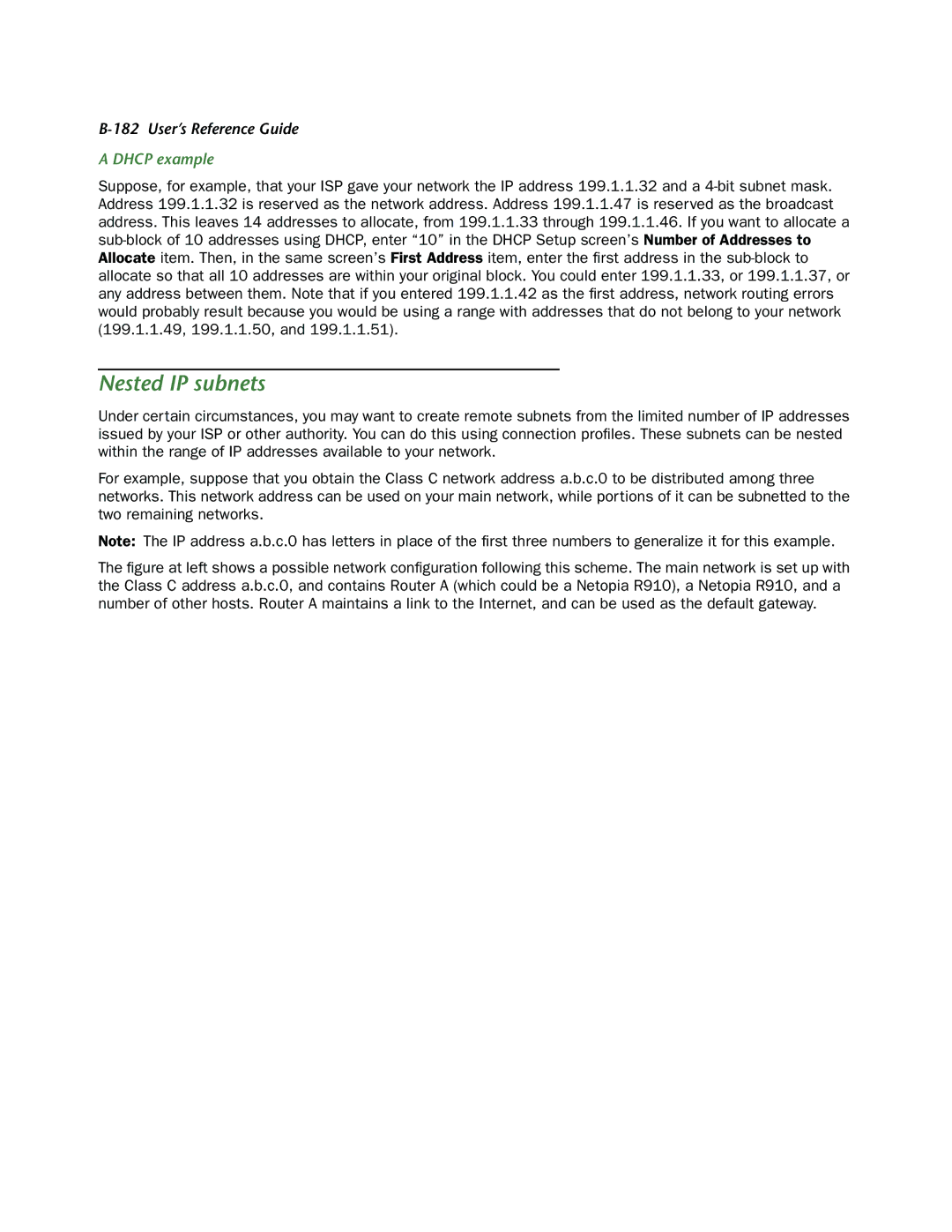B-182 User’s Reference Guide
A DHCP example
Suppose, for example, that your ISP gave your network the IP address 199.1.1.32 and a
Nested IP subnets
Under certain circumstances, you may want to create remote subnets from the limited number of IP addresses issued by your ISP or other authority. You can do this using connection profiles. These subnets can be nested within the range of IP addresses available to your network.
For example, suppose that you obtain the Class C network address a.b.c.0 to be distributed among three networks. This network address can be used on your main network, while portions of it can be subnetted to the two remaining networks.
Note: The IP address a.b.c.0 has letters in place of the first three numbers to generalize it for this example.
The figure at left shows a possible network configuration following this scheme. The main network is set up with the Class C address a.b.c.0, and contains Router A (which could be a Netopia R910), a Netopia R910, and a number of other hosts. Router A maintains a link to the Internet, and can be used as the default gateway.
